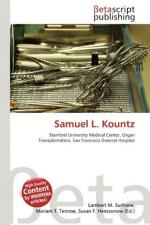|
This section contains 212 words (approx. 1 page at 300 words per page) |
World of Invention on Samuel L. Kountz
One of the pioneering kidney transplant specialists in the country, Samuel Kountz was born on October 30, 1930 in Lexa, Arkansas. He graduated in 1952 from the Agricultural, Mechanical and Normal College of Arkansas and obtained a chemistry degree from the University of Arkansas. With the backing of Senator J. W. Fulbright, he won a scholarship to the University of Arkansas Medical School, becoming the first African-American to study there. While training at the Stanford Medical Center, Kountz discovered that large doses of methylprednisolone stopped the rejection of transplanted kidneys. In addition, Kountz performed the first kidney transplant between patients who were not identical twins in 1964. This transplant, between a mother and a daughter, made kidney transplants possible for thousands of ailing patients. In the following eight years, 5000 kidney transplants were performed. Kountz also helped build a device to aid kidney transplants. At the University of California in 1967, Kountz and colleague Folker Belzer produced a machine capable of preserving donated human kidneys for more than two days while they were delivered to a suitable recipient. On a teaching assignment to South Africa in 1972, Kountz contracted a mysterious disease which resulted in brain damage. He never fully recovered, remaining seriously ill until he died at his home in Great Neck, New York, on December 23, 1981.
|
This section contains 212 words (approx. 1 page at 300 words per page) |


